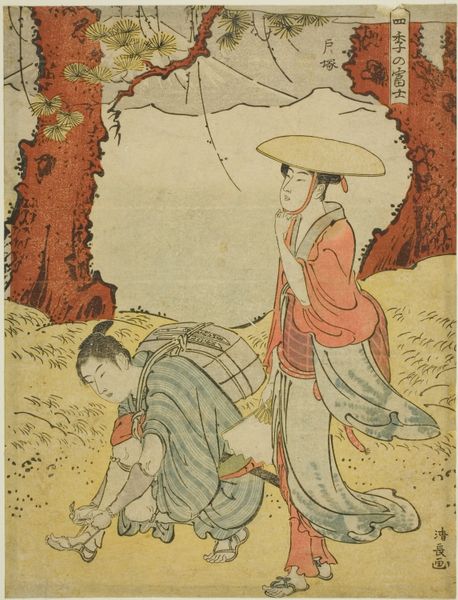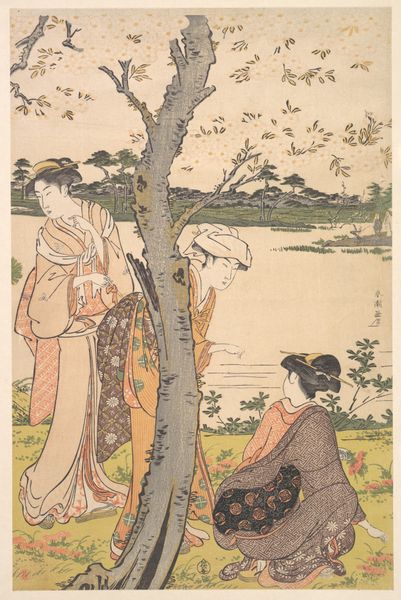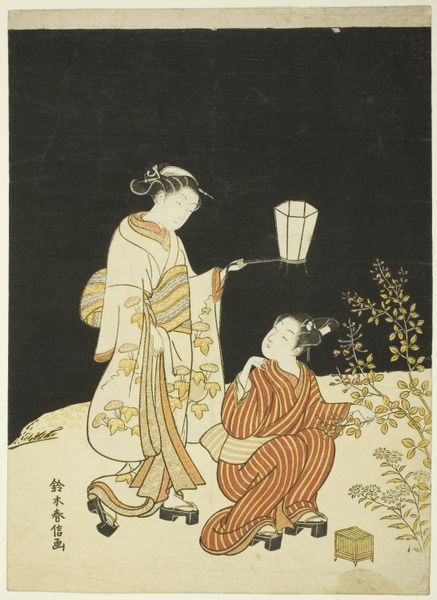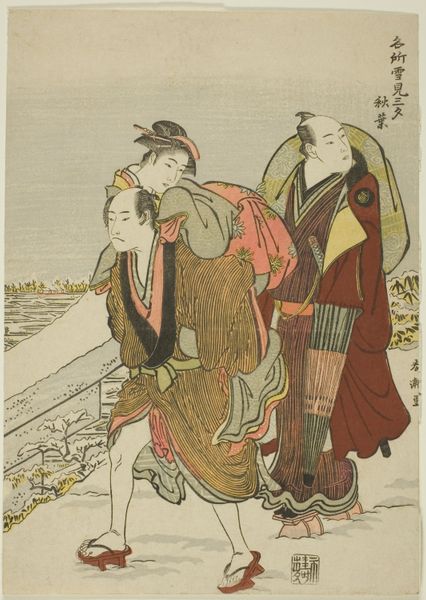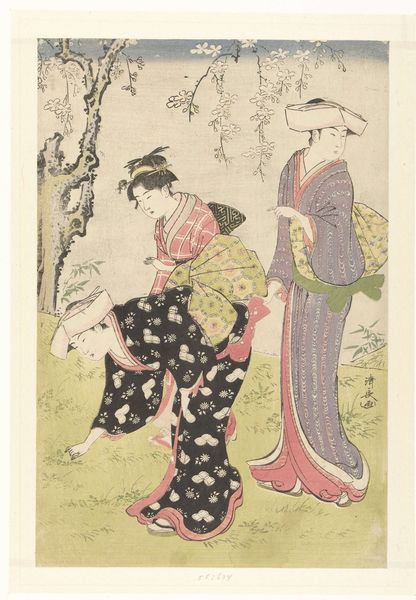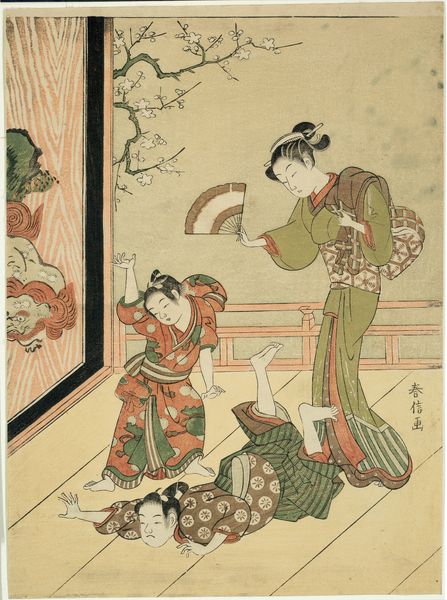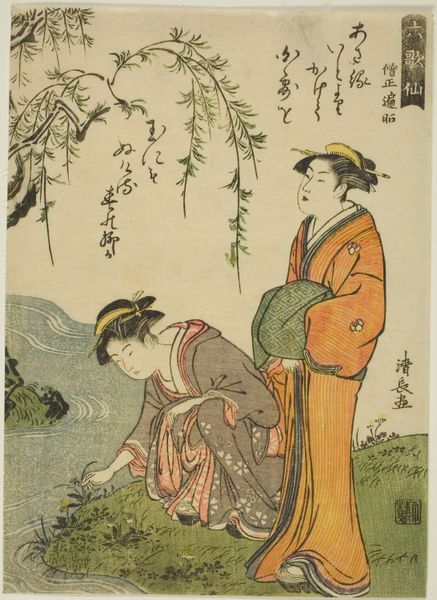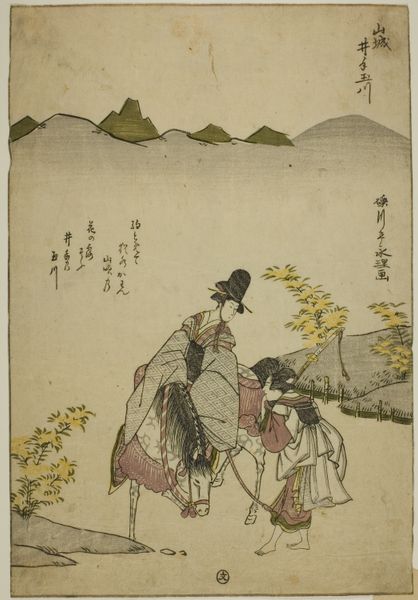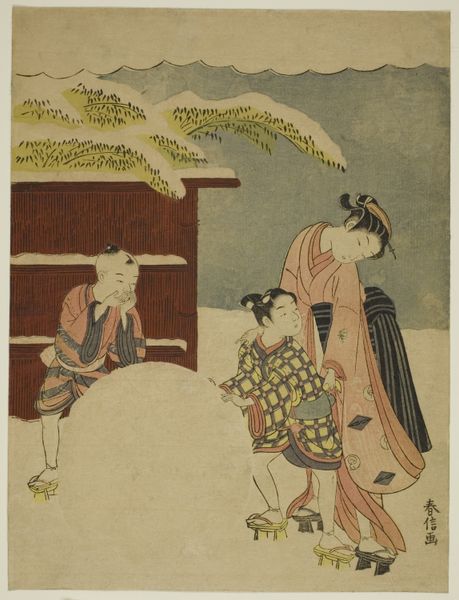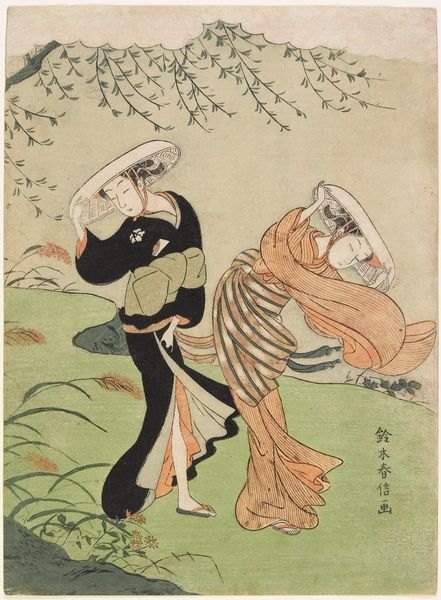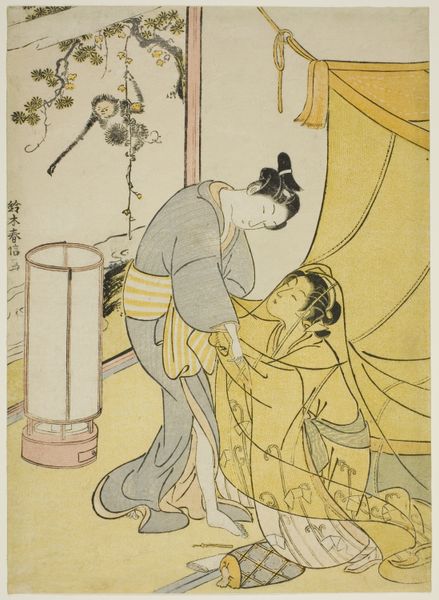
Poem by Ki no Tsurayuki, from an untitled series of Thirty-Six Immortal Poets c. 1767 - 1768
0:00
0:00
print, woodblock-print
#
portrait
# print
#
asian-art
#
ukiyo-e
#
figuration
#
woodblock-print
#
genre-painting
Dimensions: 28.8 × 21.1 cm (11 1/4 × 8 1/4 in.)
Copyright: Public Domain
Curator: Here we have a beautiful example of ukiyo-e, specifically a woodblock print created by Suzuki Harunobu around 1767 or 1768. It's titled "Poem by Ki no Tsurayuki, from an untitled series of Thirty-Six Immortal Poets," and it's currently held in the collection of The Art Institute of Chicago. Editor: It strikes me as both serene and quietly humorous. There’s something theatrical about the pose of the woman craning her neck, almost like she’s performing for the poem inscribed above her head! The cherry blossoms add such a poignant layer. Curator: Exactly! It's interesting how Harunobu references classical literature and portraiture within this genre painting format. Consider the materials, though—woodblocks. The whole process involves collaborative labour, artisans, publishers. These works weren’t simply born from the solitary artist’s hand. The context of production is fascinating. Editor: I can't help but fixate on the poem itself! It adds another layer. It seems as though Harunobu is not just presenting two beautiful women in nature, but embedding layers of meaning that blend social observation and lyrical tradition. Curator: It’s a commentary on social practice too, remember. These prints were made for popular consumption. Ukiyo-e offered an accessible form of art, produced to be widely available as prints. This diverges quite radically from traditionally valued, single state works like painting or calligraphy from the same period. Editor: It reminds me of the everyday yet slightly surreal beauty one stumbles upon, something familiar made precious by an oblique, fleeting glance. I wonder, was the intent purely decorative, or did viewers at the time sense these deeper, socio-poetic undertones as well? Curator: Definitely. The rise of the merchant class helped foster a culture of consumption around objects like ukiyo-e. It wasn't solely aesthetic appreciation. These works also carried value as fashionable commodities. But the skill of the artisans is undeniable, particularly when one considers the complex methods needed to produce these vivid colorations. Editor: So we have this accessible format showcasing labor and skill, blended with high literary reference! Thinking about it now, these weren't so simple after all. Thank you for unraveling these nuances. Curator: My pleasure. The real richness lies in understanding both the artistry and its grounding in daily life and material production.
Comments
No comments
Be the first to comment and join the conversation on the ultimate creative platform.

